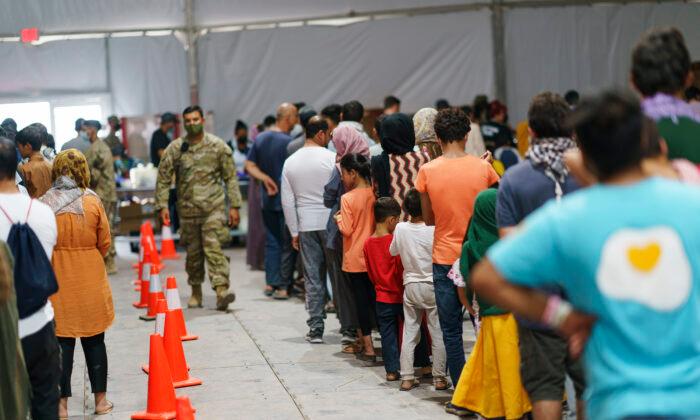The Centers for Disease Control and Prevention (CDC) is warning that there could be larger outbreaks of measles after six Afghan refugees tested positive for the disease.
The warning wasn’t issued publicly but was delivered to Robert Fenton Jr., the senior response official for the Operation Allies Welcome Unified Command Group. The operation is centered on helping Afghans escape Afghanistan and settle in the United States.
The cases “are an indicator of potentially much larger imminent outbreaks,” she said.
Because measles can rapidly and easily spread, even a single case is considered by public health officials to constitute an outbreak.
Hundreds of people were exposed to the disease in several hospitals where the six confirmed cases were, according to Walensky, who urged Fenton to immediately implement CDC public health standards to prevent measles from being introduced into U.S. communities as healthcare facilities in multiple states grapple with an increase in COVID-19 patients.
“The large number of unvaccinated Afghan evacuees as seen already has the potential to seed countless U.S. community outbreaks,” Walensky wrote, adding later that the outbreaks “represent a major public health threat and rapid mass vaccination and expanding quarantine isolation capacities are essential.”
The Department of Homeland Security, which is named as the contact for Operation Allies Welcome, and the CDC did not respond to requests for comment.

The measles cases have completely shut down evacuation efforts that were continuing in the wake of the U.S. withdrawal from Afghanistan. The pause in flights from a U.S. military base in Germany started Sept. 10 and is in place for the moment through Sept. 20, according to the Pentagon.
Afghans are required to get vaccinated for measles to get humanitarian parole and military officials are planning to start vaccinating them overseas after previously waiting to give them shots until after they'd entered the United States.
U.S. troops flew or facilitated the evacuation of roughly 124,000 people from Afghanistan across 17 days in August. Around eight out of 10 of those were Afghans, according to the State Department.
The memo’s publication came after a new report showed the number of Afghan immigrants living in the United States jumped nearly 2.5 times from 2010 to 2019, with 133,000 recorded in the latter year, according to Census Bureau numbers analyzed by the Center for Immigration Studies, a think tank that pushes for an immigration model that accepts fewer immigrants.
“Afghan households, not surprisingly, are much larger on average, but they don’t have more workers on average than does the native born,” Steven Camarota, the center’s director of research, said during a panel discussion on the findings this week. “As a consequence, they have less income coming in, and so a much larger end up in poverty or near poverty.”






